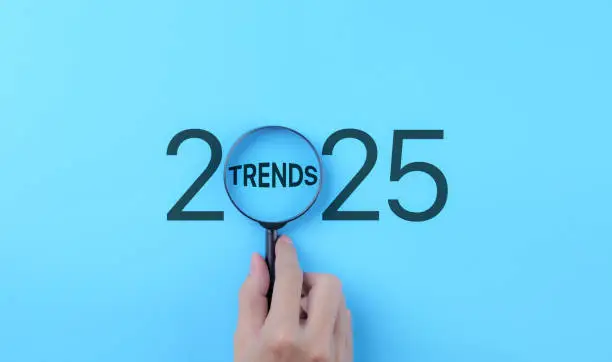When was the last time you paused and thought about how fast social media is evolving? Like seriously, one moment you’re mastering Instagram Reels, the next you’re wondering if you’re too late for Threads or if you should start a broadcast channel on WhatsApp.
I’m Chizaram, a social media manager and digital marketer with years of experience in navigating these platforms like a pro. I work with brands, content creators, and entrepreneurs to help them thrive online. And today, I’m sharing something really important with you.
2025 is shaping up to be one of the most exciting and disruptive years for social media.
This is not one of those articles filled with fluff or recycled predictions, we’re going deep. I’ll walk you through the biggest shifts happening right now and what to expect, so you can stay ahead of the game.
So, grab your coffee (or smoothie), sit back, and let’s dive into the Top Social Media Trends to Watch in 2025.
What Are the Indicators That Suggest Where Social Media Is Headed?
To understand where social media is going, you’ve got to pay attention to the signs. Not the obvious “Meta launched a new feature” signs, but the underlying indicators that show the real shift in digital culture. As someone who lives and breathes social platforms daily, I can tell you this:
Social media is no longer just about connecting people. It’s about shaping behavior, buying decisions, and even belief systems.
Below are the indicators that suggest where social media is headed:
1. User Behavior Is Changing
The first thing I always track as a social media manager is how people interact with content.
And in 2025, the patterns are crystal clear:
-
Watch times are increasing, especially for videos between 45–90 seconds. (TikTok’s “watch full video” CTA is doing work!)
-
Users are saving and sharing content more than liking it. Why? Because value-driven content is the new flex.
-
People spend more time in comment sections and DMs than ever before. Engagement is more conversational than passive.
-
Users are turning into creators at scale, everyone is building a digital identity, not just influencers.
What it means: Create with the end-user in mind. If your content doesn’t inform, entertain, inspire, or connect, you’ll be ignored.
2. Platform Algorithm Updates Favor Depth Over Virality
This is one of the biggest quiet shifts. You’ve probably noticed that TikTok, Instagram, and even LinkedIn aren’t rewarding just any content anymore.
Algorithms are:
-
Boosting content that holds attention longer
-
Rewarding creators who post consistently but not excessively
-
Prioritizing community-driven engagement (comments, shares, saves) over surface-level likes
-
Promoting content that answers search queries
What it means: The platforms are telling us, to stop chasing trends and start building trust.
3. Platform Investments Speak Volumes
Follow the money seriously. When platforms like Meta, Google, and ByteDance pour billions into certain features or technologies, it’s a major signal of where the future is heading.
-
Meta is heavily invested in AI, messaging, and AR glasses
-
TikTok is pouring resources into TikTok Shop, search, and creator monetization
-
X (Twitter) is pushing toward financial features and decentralized communication
-
LinkedIn is rolling out more creator tools, live events, and premium memberships
What it means: Big Tech is not investing in likes and filters, they’re investing in AI, commerce, search, community, and real-time interaction. That’s where you should focus too.
4. Gen Z and Gen Alpha Are Shaping the Future
Here’s a spicy truth: If you want to know where social media is headed, watch what 15-year-olds are doing.
Why? Because they:
-
Abandon platforms quickly when they get “cringe” or feel corporate
-
Use apps in weird, creative ways (e.g., using Notes App screenshots for confessions)
-
Prefer visual search over Google
- Want more authenticity and less “influencer perfection”
What it means: If your brand or content strategy isn’t future-gen friendly, it might not last another 5 years.
5. Data Privacy & Regulation Are Shaping Content Strategy
With the rise of regulations like:
-
GDPR
-
Digital Markets Act (EU)
-
Child Online Safety Laws
- U.S. TikTok legislation debates
Platforms are shifting how data is used, how ads are targeted, and how creators earn.
What it means: First-party data (your followers, email list, and communities) will be way more valuable than views. Own your audience, don’t rent it from algorithms.
6. Collaboration Beats Competition
One of the most beautiful indicators I’ve noticed is this: Big creators and brands are collaborating, not competing.
Why?
-
Algorithms reward cross-pollination
-
Joint content boosts credibility
-
It brings new eyes and higher engagement
-
It humanizes your brand
Whether it’s an Instagram Collab Post, a joint LinkedIn Live, or a co-branded giveaway it works.
What it means: Find your people and build together.
You Can Also Read: The Ultimate Guide to Monthly Social Media Reports
What Social Media Trends Will Shape Your Strategy In 2025?
1. AI-Driven Content Creation Is the New Norm
AI is not the future, it’s the present. And in 2025, it’s going to be even more integrated into everything we do on social media. From AI-written captions to automated video editing, AI tools like ChatGPT, Sora, Jasper, and Lumen5 are helping creators and brands pump out high-quality content at scale.
But here’s the thing authenticity still wins. So, the sweet spot in 2025? AI-assisted, humanized content. That means using AI to brainstorm, plan, and automate but always adding your voice, your brand tone, and your story.
Pro Tip: Use AI to build your content calendar, but humanize your storytelling. That balance is pure gold.
2. Short-Form Video: Still King, But Evolving
You thought TikTok was peaking? Nah. It’s evolving. Platforms like TikTok, Instagram Reels, and YouTube Shorts are not going anywhere, but they’re becoming more strategic.
In 2025:
-
Storytelling wins over dancing (unless you’re killing both).
-
Educational short videos will explode, people want fast learning.
-
AI-generated avatars may start appearing in these videos.
-
Searchability of videos will be key, think SEO for Shorts.
If your brand or profile isn’t creating snackable and valuable content, it’s going to be hard to stay relevant.
3. Social Commerce Is Becoming the Mall of the Future
When was the last time you physically entered a mall, not to pick up something you already planned to buy, but to see around, hoping to stumble on something new or exciting? It’s rare these days, isn’t it?
We used to walk into stores just to “see what’s new.”
But today, that curiosity, the thrill of discovery, doesn’t happen under fluorescent lights and mall music. It happens in a totally different place…On your phone. In your feed.
Welcome to the era of social commerce, where TikTok, Instagram, YouTube, and even Pinterest are the new shopping malls.
4. The Rise of Niche Communities & Private Networks
Scrolling through your main social media feed these days can feel like walking through a crowded market. There’s a lot of noise, a ton of people shouting to be seen, and you often leave feeling more overwhelmed than connected.
It’s no surprise, then, that more people in 2025 are quietly exiting the public stage of social media and moving into smaller, more intimate digital spaces.
We’re talking about niche communities and private networks, the new digital neighborhoods where people are gathering, connecting, and actually having real conversations again.
5. Search Is Getting Social
When was the last time you Googled something… or did you head to TikTok or Instagram instead? If you’re like most people today, especially Gen Z and younger millennials, you’re more likely to type “best camera for content creation” into TikTok’s search bar than into Google.
Yep, search is no longer just a Google game. It’s gone social. And in 2025, this shift is more than a trend, it’s a whole new behavior pattern.
Social Platforms Are Becoming Discovery Engines
What used to be a casual bonus feature on social apps is now a core behavior: people are actively using platforms like TikTok, Instagram, Pinterest, and even Reddit to search for answers, explore ideas, and discover products.
Why? Because traditional search gives you data. But social search? That gives you real-life experiences, what people are saying, doing, wearing, loving… right now.
6. Multi-Platform Content Strategy Is a Must
How often do you post a killer piece of content on one platform… only for it to flop?
Meanwhile, someone else takes the same idea, repackages it across three platforms, and boom, goes viral. That’s not luck. That’s strategy.
In 2025, the brands and creators who are winning the game aren’t just making great content.
They’re building smart, agile multi-platform content strategies that meet people wherever they are.
The One-Platform Mentality Is Outdated
There was a time when focusing solely on Instagram or just running your business through Facebook was enough. Not anymore. Today’s users bounce between TikTok, Instagram, LinkedIn, YouTube Shorts, Threads, Pinterest, Twitter/X, and even Reddit, often in the same day. They don’t stay in one place, and neither should your content.
If your content only lives on one app, you’re leaving reach, engagement, and revenue on the table.
7. Real-Time Engagement Over Polished Perfection
Have you ever noticed how real contents are getting more engagement? Like, that quick behind-the-scenes clip, a spontaneous Q&A, or a raw reaction video often blows up way more than the most carefully edited, polished content.
That’s no accident. In 2025, the spotlight is shining on real-time engagement over polished perfection, and it’s reshaping how brands and creators connect with their audiences.
For years, the mantra was “perfect your content before you post.” High production value, flawless edits, scripted captions. But that’s slowly changing. Today’s audiences crave authenticity. They want to feel like they’re part of a genuine conversation, not watching a commercial.
Should I bust your bubbles?
People are hungry for connection, something raw, spontaneous, and human.
What Does Real-Time Engagement Look Like?
Think about live streams where you answer questions on the spot.
Or stories where you share unfiltered moments throughout your day.
Or quick reactions to trending topics and viral memes.
It’s about showing up consistently, interacting directly, and letting your personality shine through—no filters required.
8. The Creator Economy Is Becoming the Creator Business
Have you ever wondered what it really takes to turn your passion for creating content into a full-fledged business? If you’ve been following social media trends closely, you’ve probably noticed a major shift happening in 2025, the creator economy isn’t just about side hustles anymore. It’s becoming a full-scale creator business.
From Hobby to Hustle, And Beyond
Back in the day, being a creator was often seen as something fun you did on the side — a hobby, or maybe a way to earn some extra cash. But today? Creators are launching brands, building teams, signing deals, and creating sustainable income streams that rival traditional businesses.
This shift is massive because it’s professionalizing what used to be informal and casual.
9. Automation & Chatbots for DMs and Engagement
Have you ever felt overwhelmed trying to keep up with endless messages, comments, and DMs across your social media channels? If you’re managing a brand or growing a creator account, you know this struggle all too well.
That’s where automation and chatbots come in, and let me tell you, in 2025, they’re not just helpful tools; they’re game changers for engagement.
Why Automation Is No Longer Optional
Back in the early days, automation was kind of a “nice-to-have” feature — maybe a bot to answer FAQs or send a welcome message. But now? Audiences expect fast responses and 24/7 interaction, especially if they’re messaging you to ask about a product, service, or collaboration.
Ignoring those messages means losing customers or fans. But replying to every single one manually? That’s impossible.
10. The Metaverse Isn’t Dead It’s Just Maturing
Remember all the hype about the metaverse a couple of years ago? Headlines everywhere promising a virtual world takeover avatars, digital hangouts, and a whole new reality. If you thought the metaverse fizzled out, think again. It’s not dead. It’s simply evolving.
Why The Metaverse Is Taking Its Time
The early days of the metaverse felt like a sci-fi dream , a bit futuristic, a bit overwhelming. The technology wasn’t quite ready, the user base was still growing, and brands were still figuring out what to do.
Now in 2025, the metaverse is maturing. It’s no longer about flashy demos or tech hype. It’s about real use cases and practical experiences that add value.
Frequently Asked Questions
Q1: What exactly is social commerce, and why is it so important in 2025?
Social commerce is all about shopping directly through social media platforms think buying a product right inside Instagram or TikTok without leaving the app. It’s important because it shortens the buying journey, making it easier and faster for users to discover and purchase products. In 2025, it’s becoming the digital equivalent of a mall, where brands and shoppers meet seamlessly
Q2: What are niche communities, and why should brands care about them?
Niche communities are smaller, highly engaged groups focused on specific interests or topics, like vintage sneaker collectors or plant parents. Brands should care because these communities are deeply loyal and can be far more effective for targeted marketing than broad, generic audiences.
Q3: How is search becoming more social?
Search is getting social by integrating social media content, real-time posts, and user interactions into search results. So when you search on platforms or even Google, you might see tweets, videos, or community posts that offer fresh, relevant answers rather than just static web pages.
Q4: Why do I need a multi-platform content strategy?
No single platform dominates like before. Your audience is scattered across Instagram, TikTok, LinkedIn, Twitter, and more. A multi-platform strategy ensures you reach them where they spend time, with content tailored to each platform’s style and audience expectations.
Q5: What’s the big deal about real-time engagement?
Real-time engagement means interacting with your audience instantly, like replying to comments, hosting live videos, or jumping on trending topics quickly. It builds trust and shows that your brand is active and cares about what followers say, which helps create stronger, loyal communities.
Conclusion
So, what does all this mean for you in 2025? Social media is no longer just a place to post pretty pictures or catchy captions, it’s a dynamic, evolving ecosystem where commerce, community, technology, and creativity intersect like never before.
From social commerce transforming how we shop, to niche communities creating deeper connections, to the rise of automation helping us manage engagement efficiently, every trend points to one thing: authenticity and meaningful interaction are the new currency.
As a social media manager, creator, or brand, staying ahead means embracing these shifts with curiosity and openness. Don’t be afraid to experiment with new platforms, tools, or strategies. The metaverse may still be growing, but it’s shaping the future of online connection. The creator economy is booming, and your next great partnership might be just a DM away.
References
Meta (Facebook) and TikTok Official Blogs
You can Also Read
The Ultimate Guide to Monthly Social Media Reports
Mastering TikTok Ads: Everything You Need to Know About TikTok Ads
How to Manage Multiple Accounts Without Burnout



